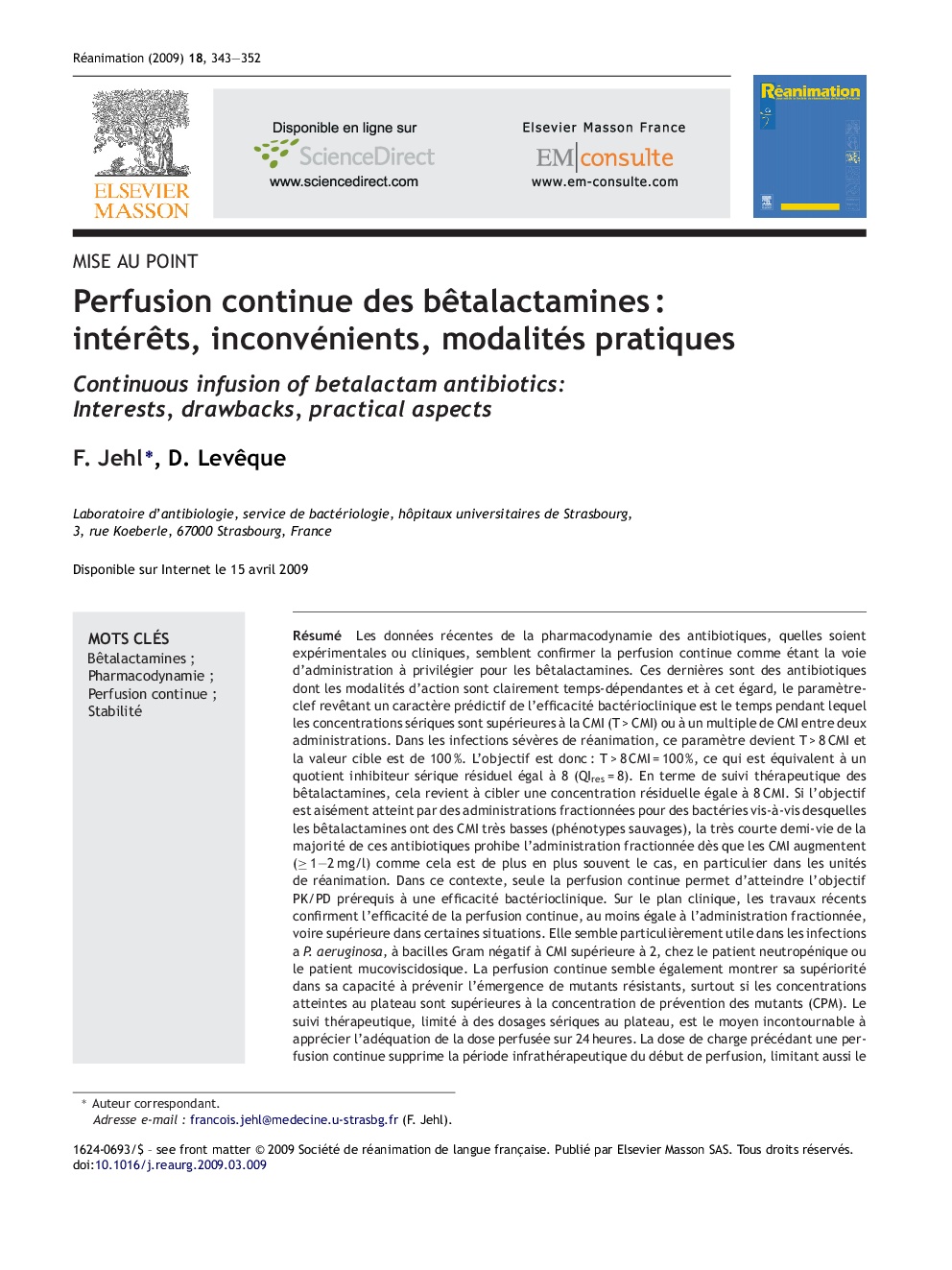| کد مقاله | کد نشریه | سال انتشار | مقاله انگلیسی | نسخه تمام متن |
|---|---|---|---|---|
| 2611988 | 1134730 | 2009 | 10 صفحه PDF | دانلود رایگان |
عنوان انگلیسی مقاله ISI
Perfusion continue des bêtalactamines : intérêts, inconvénients, modalités pratiques
دانلود مقاله + سفارش ترجمه
دانلود مقاله ISI انگلیسی
رایگان برای ایرانیان
کلمات کلیدی
موضوعات مرتبط
علوم پزشکی و سلامت
پزشکی و دندانپزشکی
طب اورژانس
پیش نمایش صفحه اول مقاله

چکیده انگلیسی
The recent experimental and clinical data on betalactams pharmacodynamics confirm that the continuous infusion is the best way of administration of these antibiotics. They show a time-dependant bactericidal activity and thus, the key-parameter predictive of their activity is the percent of time that serum concentrations are above the MIC (T > MIC) or a multiple of MIC between two administrations. In severe infections, this parameter is expanded to T > 8 MIC = 100%. This is equivalent to obtain a residual inhibitory quotient of 8 (IQres = 8). In terms of therapeutic drug monitoring, this is equivalent to target a residual concentration equal to 8 MIC. When this target is easily obtained by intermittent administration against wild phenotype bacteria with low antibiotic MIC, the very short half-life of most betalactams prohibits the fractionated administration as soon as MIC grow up to 1 to 2 mg/l, what occurs more and more frequently, particularly in intensive care units. In this context, the continuous infusion is the only way of administration able to reach the PK/PD prerequisite. The recent clinical work confirms the efficacy of the continuous infusion, which is atleast equivalent to the fractionated administration, even superior in certain situations. It seems to be really justified in P. aeruginosa infections, Gram negative infection when MIC are greater than 1 to 2 mg/l, in neutropenic patients or cystic fibrosis patients. Continuous infusion also seems to be more adequate in terms of preventing the emergence of resistant mutants, particularly if steady state concentrations are above the MPC. Therapeutic drug monitoring is essential by measuring steady state concentrations to prove the adequacy of the 24 h-administered dose. A loading dose before the continuous administration prevents from the infratherapeutic period from the start of infusion, limiting also the risk of resistance emergence. The main problem of continuous infusion is the lack of stability of a number of betalactams during 24 h at ambient temperature. Nevertheless, at 25 °C maximum, most of betalactams antibiotics (third generation cephalosporins, aztreonam, ureidopenicillins) seem to be stable for 24 h, but cooling the perfusion bags is the best way to prevent drugs from degradations. Carbapenems are totally unstable at 25 °C and therefore are not good candidates for the continuous infusion without cooling.
ناشر
Database: Elsevier - ScienceDirect (ساینس دایرکت)
Journal: Réanimation - Volume 18, Issue 4, June 2009, Pages 343-352
Journal: Réanimation - Volume 18, Issue 4, June 2009, Pages 343-352
نویسندگان
F. Jehl, D. Levêque,